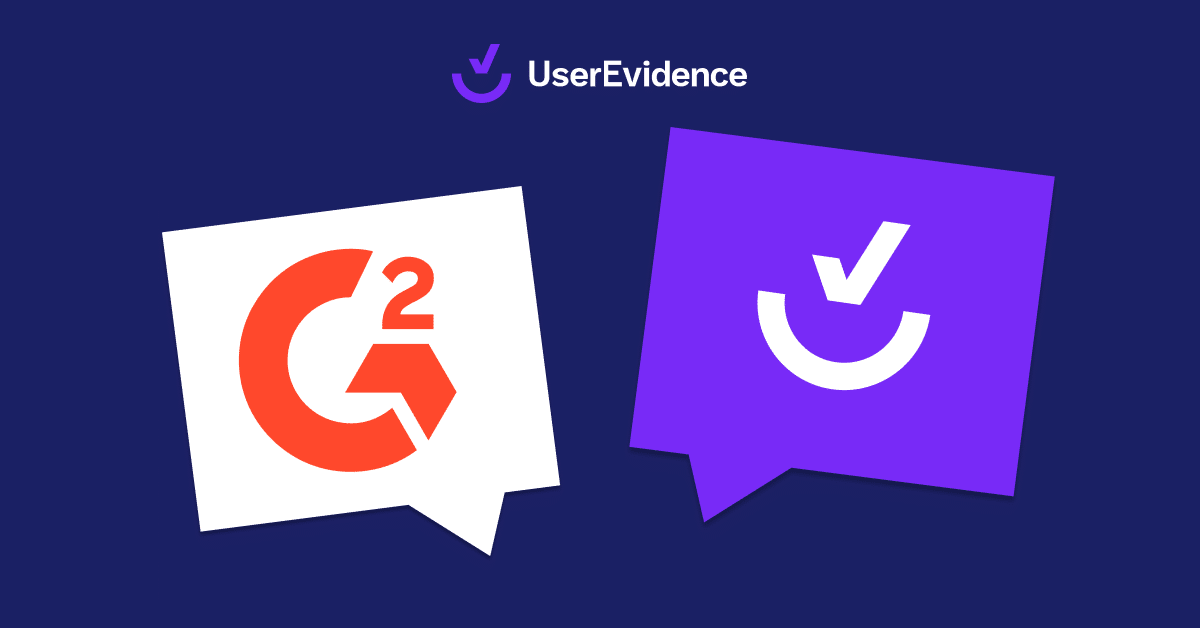Hot off the presses, the Federal Trade Commission (FTC) has made a big move: fake reviews and testimonials are officially banned.
This has been a decades-long issue for consumers, with Google flooded with falsified, irrelevant reviews that skew the ratings system and social media flooded with paid celebrity testimonials and endorsements.
Because companies have prioritized quantity> over quality when gathering customer reviews, trust in them has faded.
While this ruling largely focuses on consumer protection, its implications stretch far beyond DTC and B2C—right into the heart of B2B.
Here’s the thing: while celebrity endorsements and paid reviews might get the headlines, the biggest takeaway is simple. Buyers — agnostic of industry — want proof they can trust.
The end of an era for vanity metrics
For years, businesses have relied heavily on social proof like star ratings, generic testimonials, and “glowing” reviews. Why? Because they work. According to Forbes, over 75% of consumers look to online reviews to build trust in the product before they hit “purchase.” They’re looking for other buyers who are just like them to prove the validity and value of the product.
But the dark side of this approach has become all too clear—overembellished claims, cherry-picked success stories, bot-generated reviews, and inflated stats have led to a major credibility crisis. That’s what this new FTC ruling is all about. Fake reviews can’t pass for the real thing anymore. It reinforces our need—as buyers and marketers—to build the muscle to dig into sources and validate that what we’re seeing is real and authentic.
While this crackdown targets the B2C and DTC worlds, it reflects a much bigger shift in buyer expectations—one that B2B marketers should pay close attention to.
Buyer skepticism is growing in B2B — and rightfully so
We recently did some original research on the Evidence Gap in B2B—and, not shockingly, the insights we found through our surveying of over 600 B2B buyers, sellers, and marketers mirror the heart of what this FTC ruling is getting at.
We have a major trust problem.
B2B buyers are doing more research than ever. Before speaking to a sales rep, they scan reviews, compare features, and seek unbiased feedback. And while many sales and marketing teams have armed themselves with a strong case study and a handful of good testimonials, it’s proving to not be enough to keep crucial deals moving.
67% of buyers say a strong, data-backed business case for ROI is the most important factor when evaluating new software. Think about that for a moment — more than half of your potential customers are saying they don’t want a glowing quote from a happy client or a list of “trusted by these big names.” They want hard data. ROI numbers. Performance comparisons. They want customer evidence backed up by facts, not cherry-picked testimonials.
But this is where the Evidence Gap presents itself.
Where 67% of buyers say ROI is the most important decision-making factor, the same percentage (67%) of sellers reported that a lack of relevant customer evidence has slowed or even cost them deals.
Therein lies the gap. We aren’t collecting, curating, and sharing the right customer evidence to build that crucial buyer trust.
The problem with vanity metrics and wordsmithed testimonials
In a world where anyone can publish a “success story,” traditional testimonials are losing their power. They lack the substance buyers seek and can quickly be dismissed as biased or cherry-picked. Even more worrisome, vanity metrics can be easily manipulated, further undermining buyer trust.
Your buyers know this. They can see through empty claims. The FTC tightening the rules on fabricated proof in the consumer space forces us to hold a mirror up to our tendencies in B2B.
“We have a real legitimacy problem on our hands,” “Mark Kosoglow, CEO and founder at Operator.ai, said when we chatted about our report’s findings. “I know I rarely believe what a vendor tells me because I’ve seen how these numbers are created so many times.”
51% of B2B buyers said statistical evidence is the most trustworthy customer proof they could receive. But with so many marketers admitting to cherry-picking and fluffing up the best-of-the-best ROI metrics and touting them as proof, we’re barreling toward a similar crisis of trust in B2B as we’re seeing now in B2C.
Customer evidence: the antidote to the trust deficit
That’s why real customer evidence matters more than ever.
At UserEvidence, we believe hard, verified data is the new currency of trust. While traditional testimonials are built on words, customer evidence is built on facts like competitive benchmarks, product usage data, ROI stats, and other quantifiable outcomes that can’t be faked or overstated.
This isn’t just about looking good in a pitch meeting. It’s about empowering prospects to make confident decisions based on real, validated proof. Because in the age of buyer skepticism, you can’t afford to rely on anything less.
Real, verified evidence isn’t just nice to have — it’s a requirement
The message is clear in a landscape where the FTC is cracking down on fake proof points: transparency and honesty aren’t optional.
While this ruling specifically calls out fake reviews and celebrity endorsements, it underscores a bigger truth: buyers are demanding better proof and will not tolerate empty promises.
This change is already transforming how consumers buy, and the same expectations reshape B2B purchasing decisions. Real, data-backed evidence isn’t longer a differentiator — it’s a necessity. Your customers are holding you to a higher standard, and it’s time to rise to the challenge.
The bottom line
The FTC’s ban on fake reviews should be a wake-up call for everyone in the B2B space. It’s a sign that we’re moving towards a world where transparency and integrity aren’t just buzzwords—they’re table stakes.
Your buyers are skeptical, informed, and tired of being sold to with fluff.
As the rules change and expectations rise, your approach to customer evidence needs to evolve, too. It’s not just showing the good parts; it’s about being real, transparent, and credible.
That’s what will set your brand apart. And it’s the only thing that will earn their trust.
The future of B2B is built on customer evidence
If you’ve been feeling this tension — you know that your buyers need verifiable proof but can’t implement customer evidence at scale on your own — let’s talk. We’re building our platform for teams like yours.




